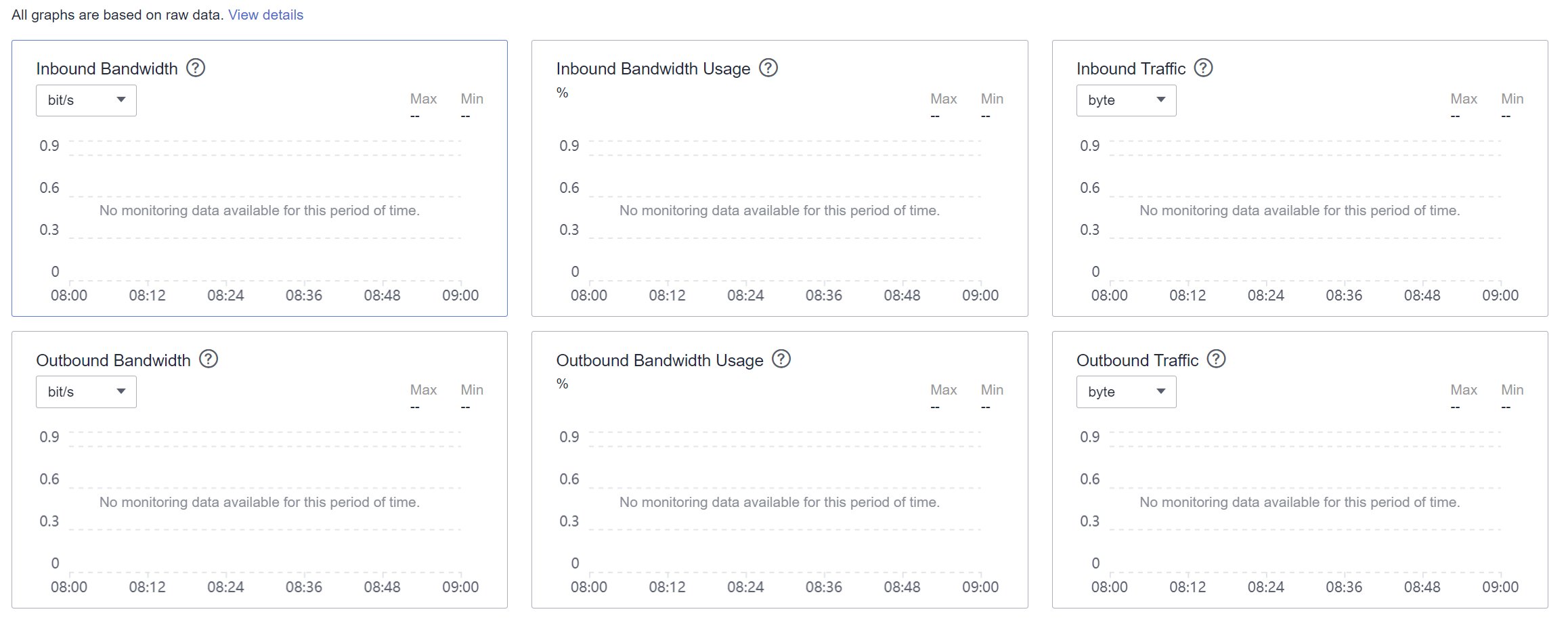Viewing Traffic Usage
Scenarios
For livestreaming platforms, traffic often increases suddenly, which makes the services unstable. To address this issue, most of them use ELB to distribute traffic. By working with Cloud Eye, ELB allows you to monitor the traffic usage in real time. You can view the traffic consumed by the EIPs bound to public network load balancers to better balance your application workloads.
Prerequisites
- Load balancers are running properly.
- If the associated backend server is stopped, faulty, or deleted, its metrics cannot be viewed on Cloud Eye. After such a backend server restarts or recovers, its monitoring data will be displayed on the Cloud Eye console.
Viewing Traffic Usage of the Bound EIP
- Log in to the management console.
- In the upper left corner of the page, click
 and select the desired region and project.
and select the desired region and project. - Click
 in the upper left corner of the page and choose Network > Virtual Private Cloud.
in the upper left corner of the page and choose Network > Virtual Private Cloud. - In the navigation pane on the left, choose Elastic IP and Bandwidth > EIPs.
- Locate the EIP bound to the load balancer and click its name. On the Bandwidth tab, you can view the data for the last 1, 3, 12 hours, last day, or last 7 days.
Figure 1 EIP traffic usage

Table 1 EIP and bandwidth metrics Metric
Meaning
Value Range
Monitored Object
Monitoring Interval (Raw Data)
Outbound Bandwidth (originally named "Upstream Bandwidth")
Network rate of outbound traffic
≥ 0 bits/s
Bandwidth or EIP
1 minute
Inbound Bandwidth (originally named "Downstream Bandwidth")
Network rate of inbound traffic
≥ 0 bits/s
Bandwidth or EIP
1 minute
Outbound Bandwidth Usage
Usage of outbound bandwidth in percentage.
0–100%
Bandwidth or EIP
1 minute
Inbound Bandwidth Usage
Usage of inbound bandwidth in the unit of percent.
0–100%
Bandwidth or EIP
1 minute
Outbound Traffic (originally named "Upstream Traffic")
Network traffic going out of the cloud platform
≥ 0 bytes
Bandwidth or EIP
1 minute
Inbound Traffic (originally named "Downstream Traffic")
Network traffic going into the cloud platform
≥ 0 bytes
Bandwidth or EIP
1 minute
Viewing Load Balancer Traffic Metrics
- Go to the load balancer list page.
- On the load balancer list page, locate the load balancer and click its name.
- Click the Monitoring tab, select load balancer for Dimension, and view the graphs of inbound and outbound rates.
You can view data from the last 1, 3, 12 hours, last day, or the last 7 days.
Feedback
Was this page helpful?
Provide feedbackThank you very much for your feedback. We will continue working to improve the documentation.






